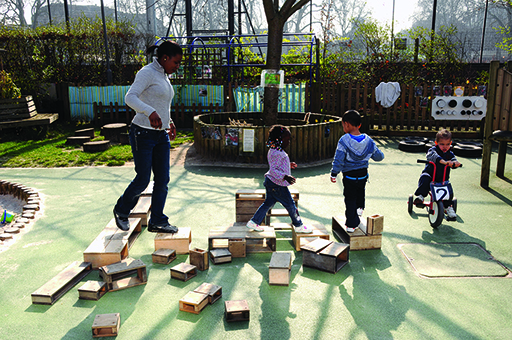Week 5: Physical development and play
Introduction
So far in this course you have looked at the importance of babies and young children experiencing and developing gross motor (whole body) and fine motor (manipulative) movement skills.
You have considered how movement stimulates vestibular and proprioceptive senses and provides opportunity for children to integrate the information they receive through their different senses. Movement, therefore, is crucial for holistic development and learning.

As babies learn to move, they move to learn. Independent mobility enables young children to make decisions, to initiate interactions with their parents, carers and other children, and to interact with their environment. Being active helps children to be interactive.
This week looks at the crucial role of play in children’s physical and overall development.
By the end of this week, you will be able to:
- describe the concept of play and different types of play
- explain how physically active play supports children’s overall development and learning
- understand ‘risky play’ and ‘rough and tumble play’ in more detail and why they are important for children’s development
- identify how everyday resources, materials and environments can extend possibilities for physical play.
